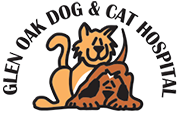Leptospirosis Alert: Make sure your pet is vaccinated
Leptospirosis is a common disease found in this area in dogs but much less common in cats. Due to the zoonotic potential, Leptospirosis is always considered with any patient presenting with acute renal, hepatic, or vascular disease.
Leptospirosis has been identified in more than 150 species. Common carriers in this geographic area include raccoons, deer, rats, other rodents, and skunks. There are many different samovars that ca cause clinical disease including L. grippotyhosa, L. Pomona, l. icterohemorragiae, and l. Pomona. The role of serovars L. bratisalava and l. autummallis is poorly defined in canine infections. Transmission can occur via direct host to hot contact, or indirectly via urine to a contaminated environment (vegetation, soil, food, water, bedding. The risk of exposure over the past 10 years has been increasing due to the wildlife populations in the urban and suburban regions seeing larger population of animals.
The Veterinary Medical Database also shows that dogs less than 15 pounds are more likely to be diagnosed with leptospirosis since they are less likely to be vaccinated in these areas.
Diagnostic testing is performed by the use of microscopic agglutination test, MAP. Dogs can frequently have negative MAT results in the first week of illiness so convalescent titer in 2-4 weeks is recommended.
Treatment for leptospirosis is usually doxycycline or minocycline. Patients in renal failure may require fluid therapy and dialysis. Survival rates of 80% have been reported.
Prevention is with L-4 vaccine. Virtually all patients at Glen Oak Dog & Cat Hospital have been receiving this vaccine for the past 5 years. Annual vaccination is recommended.
